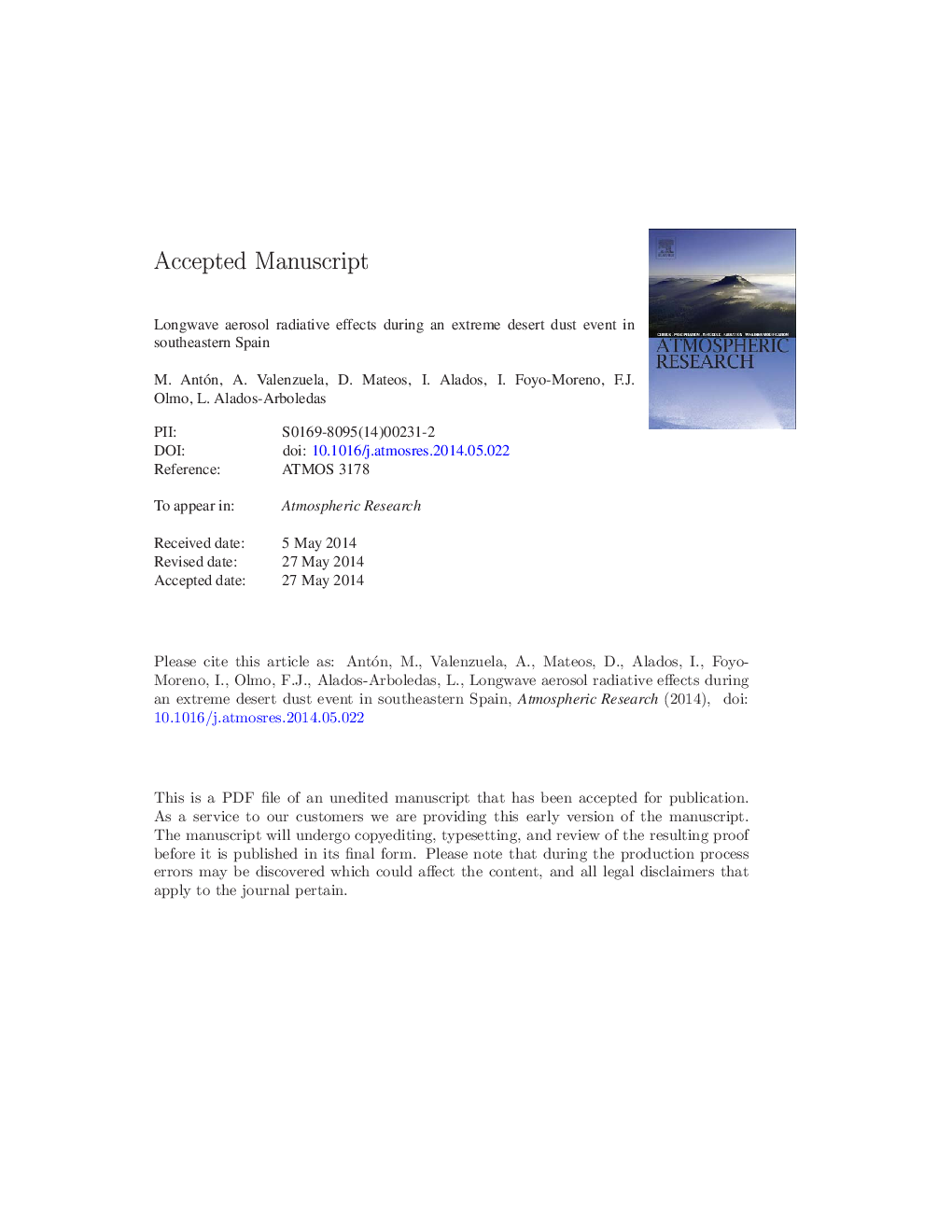| Article ID | Journal | Published Year | Pages | File Type |
|---|---|---|---|---|
| 6343511 | Atmospheric Research | 2014 | 26 Pages |
Abstract
This paper analyzes the influence of a strong Saharan dust event on longwave (LW) irradiance recorded at Granada (Southeastern Spain) on 6 September 2007. A detailed comparison with shortwave (SW) radiative effects for the same dust event is also shown. For these goals, simultaneous measurements of LW and SW irradiance were used together with the aerosol optical depth at 675Â nm (AOD675) derived from a Cimel CE-318 sun-photometer. LW irradiance on 6 September (AOD675 ranged between 0.8 and 1.5) increased 8.4% on average compared to a no-dust day (4 September, AOD675 below 0.15), while the SW irradiance was notably reduced about 28.2%. The study also showed that an increase of one unit in the AOD675 led to an increase (decrease) of LW (SW) irradiance of 20 (187) W/m2. Hence, the LW contribution to offset partially the large SW decrease at surface strongly depends on the aerosol load, changing from 40% for AOD675Â ~Â 0.8 to 20% for AOD675Â ~Â 1.5. On daily average, LW radiative effect was about 39% of the SW one and, therefore, the intense decrease of SW irradiance due to dust particles was substantially offset by the increase of the LW irradiance.
Related Topics
Physical Sciences and Engineering
Earth and Planetary Sciences
Atmospheric Science
Authors
M. Antón, A. Valenzuela, D. Mateos, I. Alados, I. Foyo-Moreno, F.J. Olmo, L. Alados-Arboledas,
